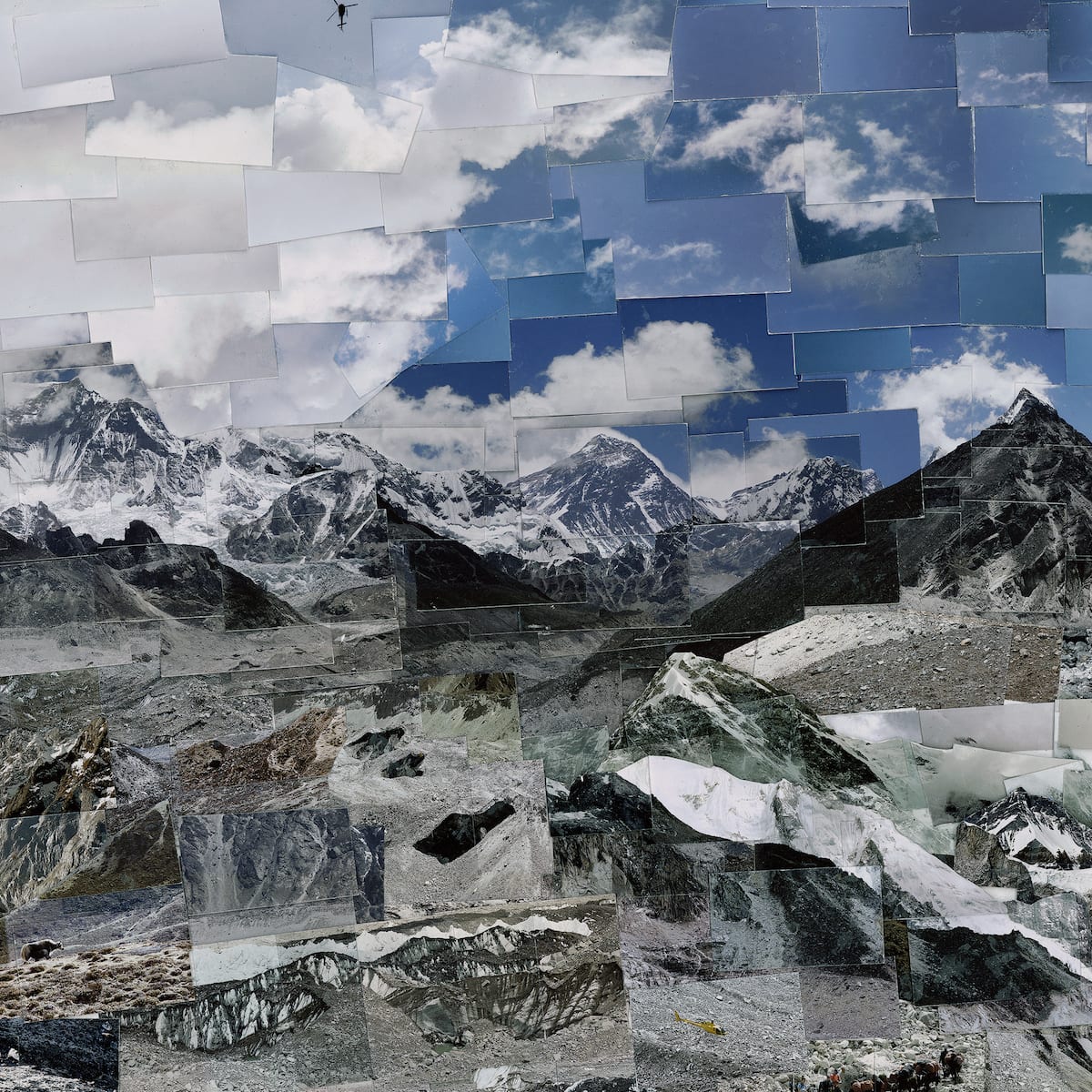BJP: How do your newest works, Everest and Journey of Drifting Ice expand on themes from your previous series, and how do they diverge — what new themes are you exploring?
SN: I have created work in a number of cities around the world but recently I have grown interested in nature and expanding my territory of observation and physical movement. I have become more focused on moving itself, so, for my recent work, I travelled along the Po river, Italy, which is 650 km long from the source to the Adriatic Sea. I also walked 500 km along the Tōkaidō road from Tokyo to Kyoto, which was painted in Ukiyo-e.
Exploring Everest was also a journey during which I did not stay in, or return to any one place. These changes have not only affected how I create work but also how viewers look at my work. I persuade the audience to move while they look at the photographs.
BJP: When creating Everest, what was your experience of journeying from Lukla to Gokyo Peak?
SN: As I reached the top of one mountain, another huge mountain stood in front of me. At first, I found myself flinching at the daunting scale of the new challenge. I started the journey with my assistant and a Sherpa, carrying 250 rolls of film and large cameras on our shoulders. I wanted to photograph the mountains of Khumbu, trekking paths, people living along the routes, climbers, towns, and farms.
For cityscape shooting, I usually have a base from where I travel around to take pictures. But, in the mountains, I seldom took the same route twice. Therefore, I had to be extra careful not to miss documenting particular places. One of the challenges of trekking was getting my body used to the altitude, and during the journey, we were also tempted to walk on the well-worn paths to save energy, but we had to leave them at certain points to shoot specific images, which was exhausting.
Having to choose what to take, or not to take, because of the limited number of films, while struggling to cope with the unfamiliar environment and physical conditions, was an extremely tough experience, but it offered an opportunity for constant self-reflection.
